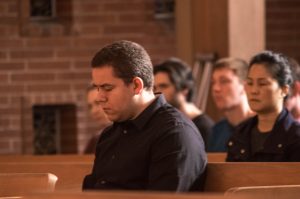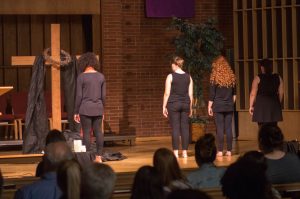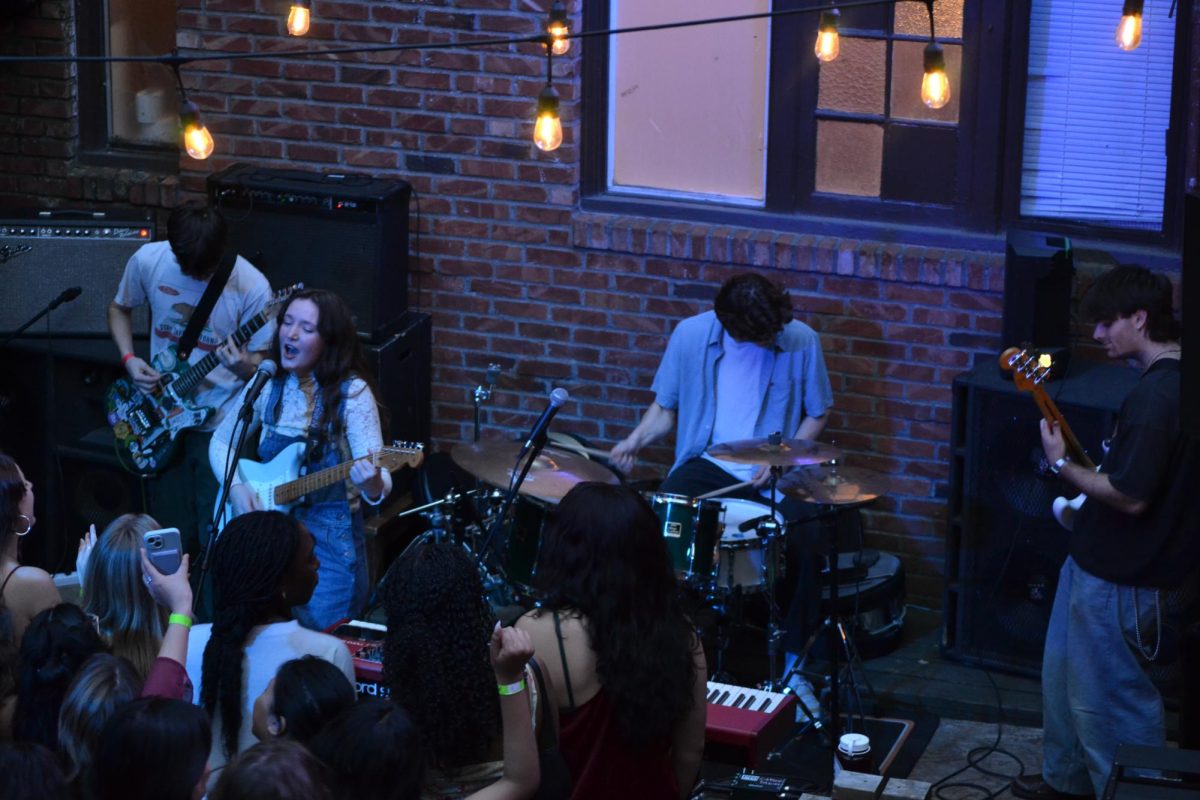
A solemn silence fell upon the crowd at First Free Methodist Church on Good Friday as people trickled through the heavy wooden doors leading into the sanctuary.
Typically friendly greeters exchanged nods of sobriety as they handed out small black cloths to those who passed through. A worn, sturdy cross stood at the center of the stage with the crown that Christ bore of jagged thorns laid across the highest beam.
On Friday, March 30, SPU’s Campus Ministries Team held its Good Friday service as a way to remember Christ’s sacrifice in order to properly celebrate the Easter holiday.

The atmosphere of the room was unnatural and sorrowful, as the church asked that all would remain silent even before the service would begin.
A loud drum sounded from the back of the sanctuary, followed by a procession wearing all black. The percussion, performed by Josh Grupe, intensified the mood and created a more intimate space.
Alden Wyland and Tim Bartlett contributed their musical talents with the piano and bass as well.
This was followed by the song “Were You There,” with powerful lyrics that dug into the hearts of the audience asking, “Were you there when they crucified my Lord?” Throughout the service this song would be repeated in different ways.
Kelsey Rorem of Campus Ministries addressed the audience by first acknowledging the uncomfortable, and perhaps unfamiliar, environment.
For Cameron Moe, this feeling was heavy and tangible. “The service was the most uncomfortable church service that I have ever attended, but was also extremely powerful and one that I will not forget,” Moe said.
“Friends, if you feel uncomfortable in this service, I would invite you to lean into that space and be open to what the Holy Spirit might be doing,” Rorem said.
Rorem urged the audience to reflect on the true meaning of Good Friday and what Christ endured prior to His triumphant resurrection, but she also posed a question.
“I wonder if a truly faithful Easter morning might actually depend on taking the time to sit in this discomfort, taking time to remember what Jesus endured, and remembering once again our own part in this narrative.”

Sophomore Aaron Lumpkin recognized the importance of this as well saying, “Often, I feel that churches spend the Easter season solely in celebration of what happens on Sunday without much focus on the days before.”
The message began with a reading from the Gospel of Luke and the account of Christ before Pilate while on trial. Although Pilate could find no charge against him, the angry crowd relentlessly demanded that Christ be crucified and the criminal Barabbas be released
Barabbas was accused of insurrection and murder, yet Christ was the one put to death.
With each section of reading, students on stage acted out each scene, creating a visual representation full of emotion and pain. Among these students included Emily Frier, Miriam Hartwig, Sydney-Cheyenne Hampton and Delaney Palmer.
The service focused on the seven sayings of Jesus prior to his death with verses of scripture read aloud by Priscilla Ozodo. She presented Christ’s words of forgiveness, saying, “Father, forgive them, for they do not know what they are doing.”
The actresses on stage surrounded Jesus, throwing words of shame into his ears while he carried the world’s weight of sin and shame on his shoulders
Ozodo then sang the words “Were you there when we crucified our Lord?” connecting the audience to the scene on stage and the reality that each of us has contributed to the cause of Christ’s death.
Lumpkin recalled, “It was uncomfortable just sitting in Jesus’ death, yet this discomfort also conveyed the power and significance of his sacrifice.”
With the final scene, Ozodo read a passage from the book of Isaiah that prophesied the death of the savior saying, “He was pierced for our transgressions, he was crushed for our iniquities; the punishment that brought us peace was on him and by his wounds we are healed.”
With these words, the procession of actors filed out of the sanctuary and Kelsey Rorem led the audience with the tearing of the cloth. Each person was given one swatch of black cloth, symbolic of the veil that once separated God and humanity, which was torn by work of Christ.
The audience was then left with a time for prayer and silence on all they had witnessed. Many lingered in this moment with reflection and awe.
“When Jesus died in the service, I felt such a sense of grief, which resulted in a very meaningful time of prayer following,” Moe said.
Many went to the wooden cross on the stage and knelt before it, placing their torn cloth at the foot of it.
This solemn service allowed for people to take time and appreciate the sacrifice that Christ made and to prepare hearts for the joy of Easter day.
In doing this, Moe said, “It gives me even greater joy with Easter that my God is not dead.”
















































































